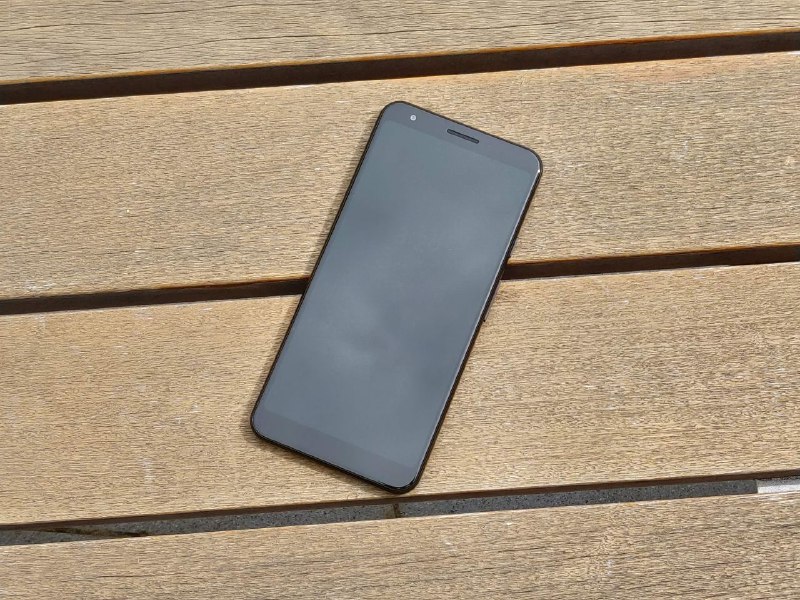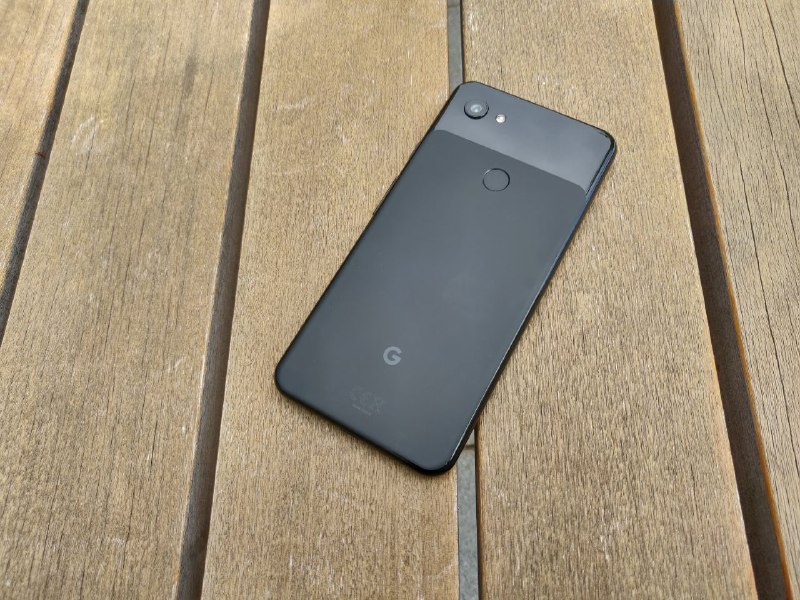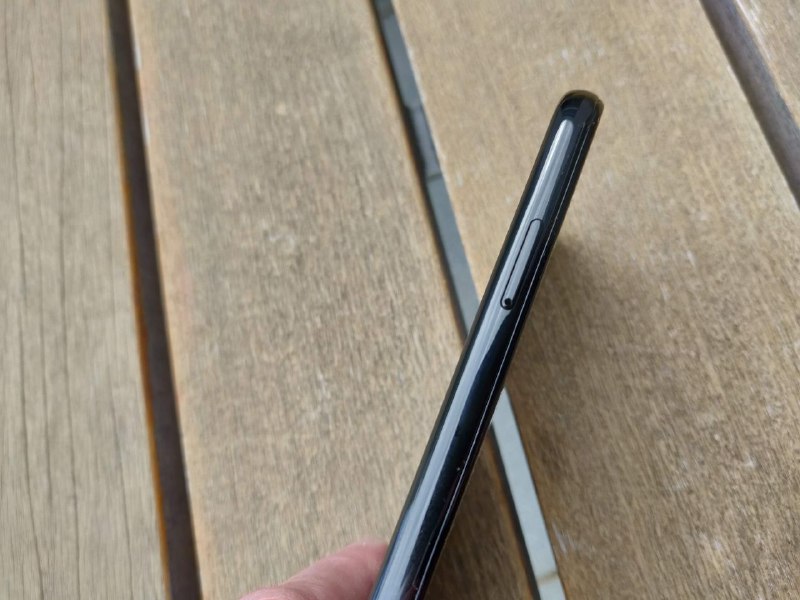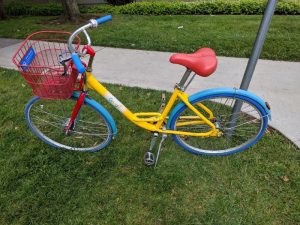Now that the Google Pixel 3a XL is official following its announcement at Google IO earlier this morning (for you on Australian timezones), I can share with you a little secret – I’ve had hands-on with a Pixel 3a XL since last week.
Better still, I can now share with you some of my early thoughts, and here they are.
Design is the same but different
The immediate first impression is that Google’s Pixel 3a XL looks a lot like the Pixel 2 XL I own; so much so, in fact, that it almost fits in the Pixel 3 XL case, which has been great for keeping it incognito over the last few days.
Moving to the phone itself, the back looks extremely similar except for a curvature on the glass on the rear. Flipped over, the front is just missing a speaker grille down the bottom. Don’t worry, though: the Pixel 3a XL still has stereo speakers, it’s just that one of them is downward firing.
Where the Pixel 3a XL differs physically is on the front; not only has one of the speaker grilles moved, but there’s also no notch; Google opted for the bezel-look of 2018, or even 2017. This means there’s bezels top and bottom (and no notch!) and, in good news, the bezels aren’t massive like that on the first generation Pixel, but are very similar to those found on the Pixel 2 XL and the Pixel 3.
The Pixel 3a XL is extremely light in the hand, and that’s thanks to a polycarbonate shell. The curvature of the back and the front are nothing compared with some of the designs we are seeing this year, even in the mid-range segment of the market.
This is a traditional design, through and through, and it’s a design language Google has used for a couple of years now, and we rather like it’s elegant simplicity.
Hardware is mid-range in most areas
There’s no avoiding it; Google’s whole point with the Pixel 3a range was to target the mid-range, and so unlike the full Pixel 3 / Pixel 3 XL, this is mid-range hardware, but it’s mid-range unlike most anything you’ve seen from other manufacturers.
Google’s aim here is not about putting the best specs in, rather it is about creating the Pixel experience (i.e. Google’s idea of the best experience) at an affordable price. The choice of processor is a Snapdragon 670, which we have seen in mid-rangers before. The difference here is the experience.
You might argue that Google attempted to create a Pixel experience with mid-range specs with the original Pixel 3 line – let’s face it, the 4GB of RAM they went with in the Pixel 3 phones was a definite mid-range choice. However, unlike the Pixel 3 range, the Pixel 3a range is priced at the mid-range, and in this, Google has definitely hit the mark.
The Snapdragon 670 processor is snappy here, managing to speed along without any hiccups when scrolling from one page to another and the gaming experience is nothing to be sneezed at.
I tested out a couple of driving games (I can’t help myself) and had no issue with it pausing or stuttering. Everyday use was a breeze, but I expected it to be. The majority of people who use their phones for email, messaging and social media will need nothing more than the mid-range processor in this phone, and they’ll be very happy with the price savings that come with it.
Were Google able to bring the Pixel experience to this mid-ranger?
As Google has made very clear, the company wanted a Pixel experience with a mid-range price tag, and they’ve definitely achieved it. All of the “Pixel experience” can be found here on the Pixel 3a range; everything that Google Assistant offers is here, and Active Edge has come across too.
Animation is silky smooth, and Google’s take on Android UI design is – in my view – unmatched. Key Pixel features like always-on display work exactly the same as they do elsewhere. Flip to silence your phone? That’s here too, and the popular “Now Playing” feature joins these features on the Pixel 3a as well.
You may have noticed a trend here, and the reason should be obvious. Google has made a more affordable Pixel phone that does exactly what a Pixel phone should, and it’s very, very good.
The Google Pixel 3a’s gOLED display
Until the launch announcement today, we had virtually no idea what a gOLED display was, but we had seen it rumoured for inclusion in the Pixel 3a XL. Well, we can now tell you that the gOLED display – which stands for Glass OLED – is almost as good as the display inside the full Pixel 3 XL. It’s also pretty damned tough.
The display is not quite as vibrant and doesn’t seem to get as bright, but there’s every chance this doesn’t matter to you. It’s still as good as any display I have seen on a mid-range device, so it’s not as if Google’s lagged behind in this department.
The display has the very slight 2.5D curve on the edge of the glass just as the Pixel 3 has. It’s not a Galaxy S10 style curved display, and it’s not mirror flat either. Rather, it’s something in between. I quite like this type of display as the curve allows for a nice touch experience, without the annoyance of any mis-touches or holding at the side causing the touch response to go nuts (Hi Samsung!).
A Pixel camera, in a mid-range phone
One thing the last couple of years in mobile technology has taught us is that photography is the next big race, until 5G becomes the next differentiator. There’s some very expensive phones doing the rounds at the moment which wipe the floor with other mobiles when it comes to smartphone photography, and the Pixel 3a XL is not one of those.
Google aren’t going to out-design companies such as OPPO and Huawei, which have been living in this price bracket since their very entry into the smartphone market. No, where Google will win customers over is with the Pixel experience, discussed above, and the camera.
The Google Pixel 3 camera is a premium camera, and there can be no doubt about it. Google has placed the exact same camera hardware and the exact same camera hardware from the Pixel 3 into the Pixel 3a and the results speak for themselves.
Huawei and Samsung might be sitting pretty atop the DxOMark ratings for premium smartphone cameras, but Google isn’t trying to unseat them with the Pixel 3a XL. What it is trying to do – and will probably succeed at doing – is offering the best mid-range phone camera experience.
There is one new feature coming to Pixel phones, firstly with this and rolling out to the others in the coming days, Time Lapse. Time Lapse just shrinks down a video such as 120sec of video to a second. Google give you the option to compress it down to 5x, 10x, 30x and 120x. The options Google has give are seen in the screen shot below (both 120x). Obviously, taking such a long video and condensing it down requires some form of steadying such as a tripod or something to lean on — see the different results below.
Google has trumped most mid-range cameras hands-down, and it’ll be awhile before we see any other cameras in this price range coming anywhere close.
This brings us to the Pixel 3a pricing
Is it really entry-level? Google may be saying it’s entry level but we – in Australia – tend to say that entry level is around the AU$400 and below mark, although that may be creeping up a bit in recent times. This phone sits smack bang in the middle of what we like to call mid-range.
Mid-range though, the phone makes a very compelling case for a purchase. At no time while using it did it feel like I was not using a standard Pixel 3. Sure it may not have wireless charging, ingress protection and has a slower processor, but the Pixel experience is very Pixelly. The camera is also something else, especially in a mid-range phone.
Of course these are only my first hands on thoughts after using it for only a few days but I cannot see that changing any time soon. If the mid-range is where your next purchase lies then a full Pixel experience is beckoning you.


















Could you test the USB-c output for HDMI?
Pls…?
I’ve tested the Pixel 3a with my USB-C docking station at home, and no joy – it doesn’t output any video signal. It’ll happily work with keyboard and mouse, though.
I don’t have a USB-C HDMI dongle though so I can’t test that for you, sorry.
Thanks Chris!
I suspect that if there’s no love from a dock, then a dongle would be the same.
Sadly Google seem to continue to eschew physical video outputs in their phones
May have to look at the S10e :/
So what does gOLED stand for? The article says “we can now tell you that the gOLED display – which stands for xxx”
Surely it’s just Google OLED?
Glass OLED
What is the price??
Had to read the other article to find it. $799??…..at least $200 too much.
That’s for the XL, it’s $649 for the standard.
why no purple colour for australia?!?